This Golden Turmeric Paste, also known as simply Golden Paste, can be made from fresh turmeric root or dried turmeric powder. It's an anti-inflammatory powerhouse that you can put in drinks, desserts, curries, and even on your face!
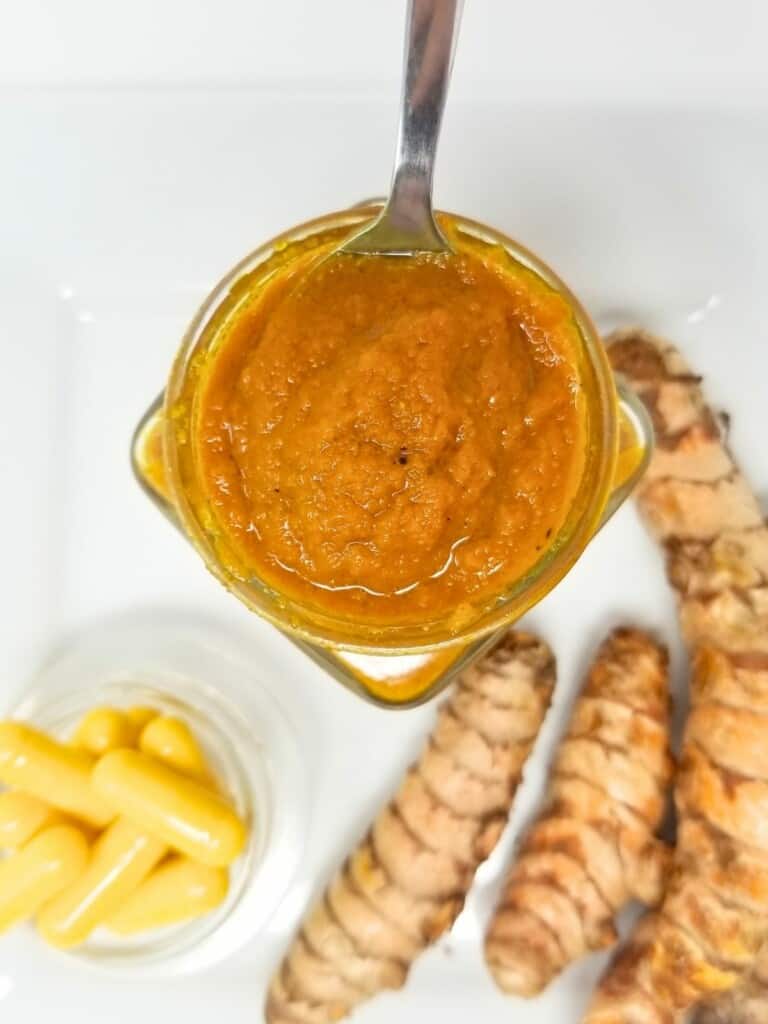
Jump To
About this recipe
Anti-inflammatory Paste: Turmeric is a very nutrient-dense, potent anti-inflammatory, complemented by a bit of fresh ginger (itself also anti-inflammatory). The version made with turmeric powder is admittedly much less stringy than the vitamix version, but its flavor is also a lot more potent.
Fresh turmeric root's anti-inflammatory curcumin content is also more bioavailable than that of the dried form, though both are 'activated' and enhanced by the addition of black pepper and a bit of fat (ghee is traditional, but coconut oil is the vegan-friendly version).
Use Up Extra Turmeric: if you buy a lot or even happen to grow turmeric root, this is a great way to preserve your bumper crop for use throughout the year. It's unusual in many parts of the world to find fresh turmeric root, so you can also make this with dried turmeric powder (as described below).
Add it to Anything: you can stir or sauté turmeric paste into almost anything. Unlike the powdered stuff, golden paste will virtually melt into your curry or cup of milk, or however you like to consume it. Some people even put it on their skin.
Ingredients
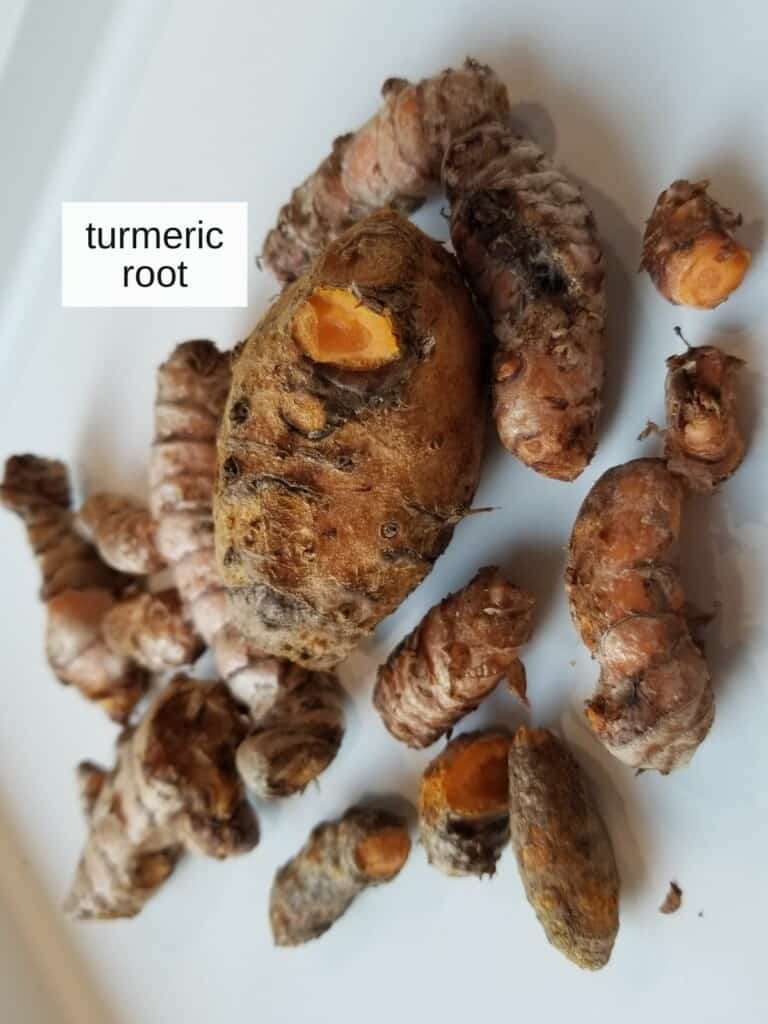
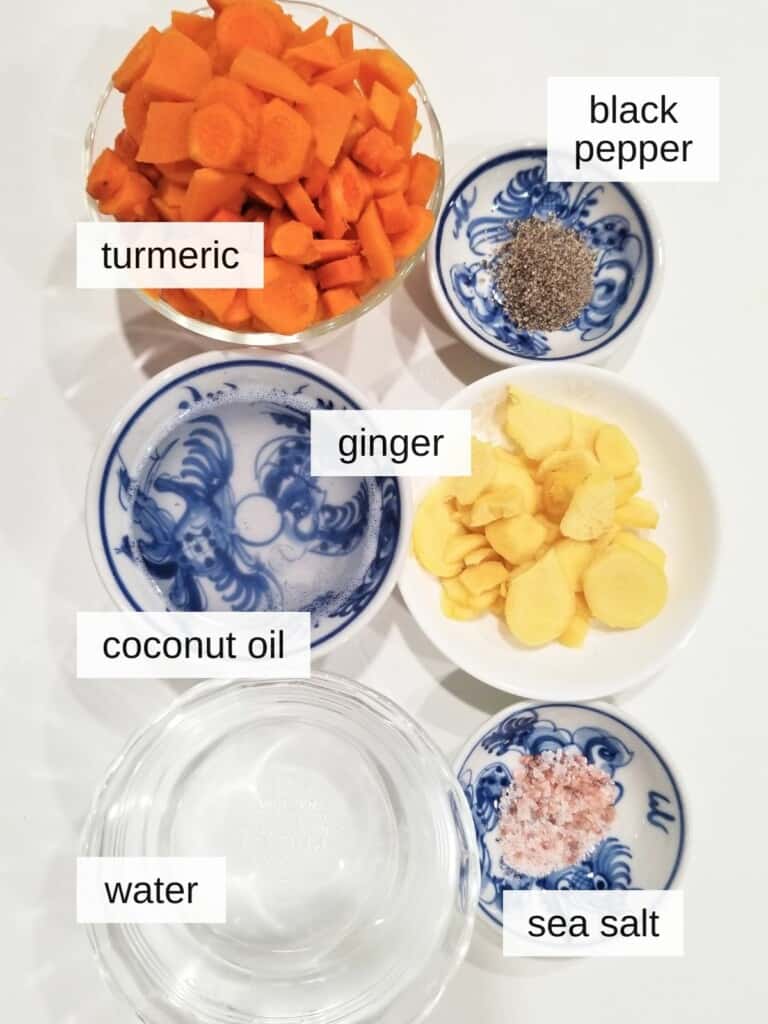
*Turmeric Root: this highly potent anti-inflammatory root is native to India, and is the very same base ingredient from which turmeric powder (or curcumin powder) is produced. If using fresh roots you'll need to peel & chop each root individually.
That process can take awhile, but making homemade golden paste is a fantastic way to preserve your crop. Another much faster option is to use ⅓ cup turmeric powder + ¼ cup extra water in place of the called-for roots.
Ginger Root: not only does ginger add another anti-inflammatory punch to the equation, but its sharp flavor helps to balance out the earthiness inherent in turmeric. Use the fresh-grated stuff or 2 teaspoons of ground ginger, for the quick version.
Coconut Oil: this is a necessary component of golden paste, not just to make it blend well, but also to make the anti-inflammatory components of the root more bioavailable. If you need to substitute, ghee would be the next best option.
Black Pepper: along with adding fat, consuming black pepper is scientifically-proven to help make turmeric's anti-inflammatory phytochemicals more available for your body to use. I highly recommend using fresh-ground black pepper, if tolerated. There's such a small amount of it in this recipe that you'll only end up with about a pinch per serving (~1 teaspoon of turmeric paste).
How to make turmeric paste: step-by-step instructions
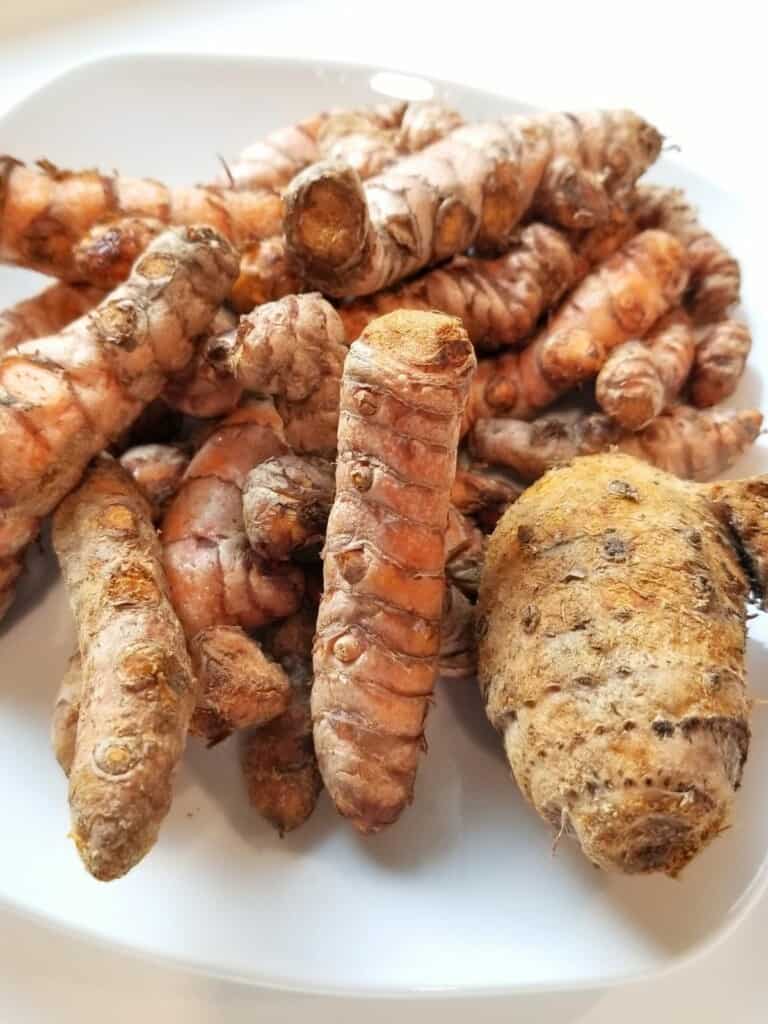
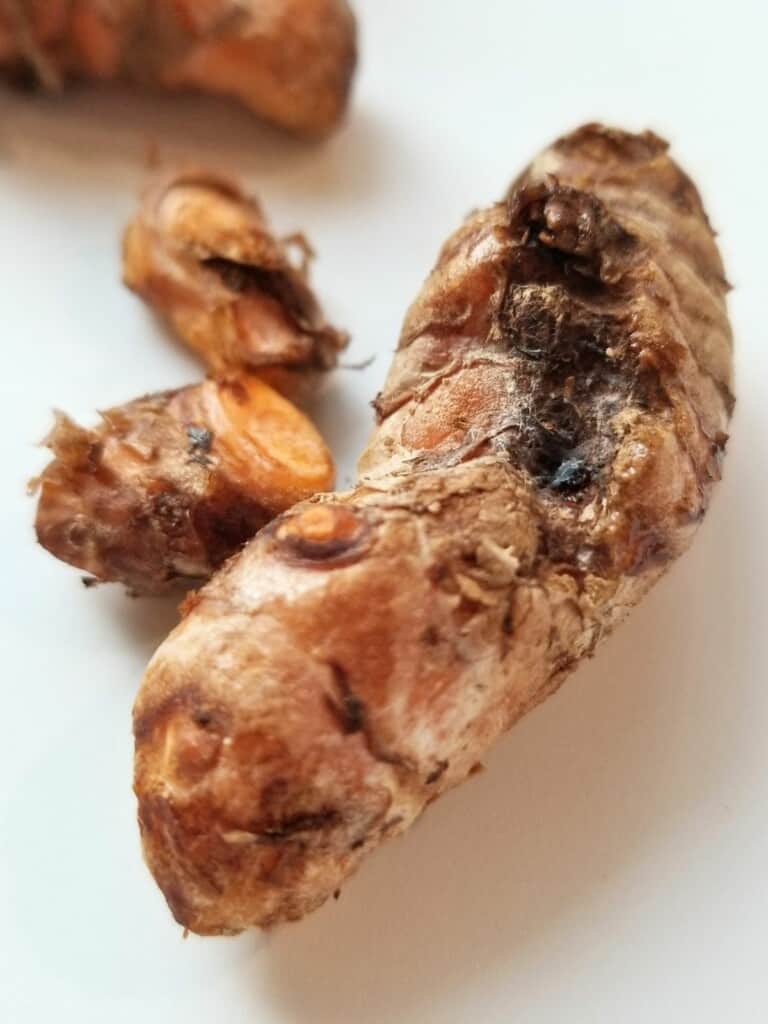
Step 1. First, be aware that your hands and equipment will stain when making turmeric paste, so plan around that. If using turmeric powder, skip to step 3. If using the fresh roots, carefully wash and then dry all your pieces of turmeric and ginger, checking for mold, and then peel each piece with a spoon.
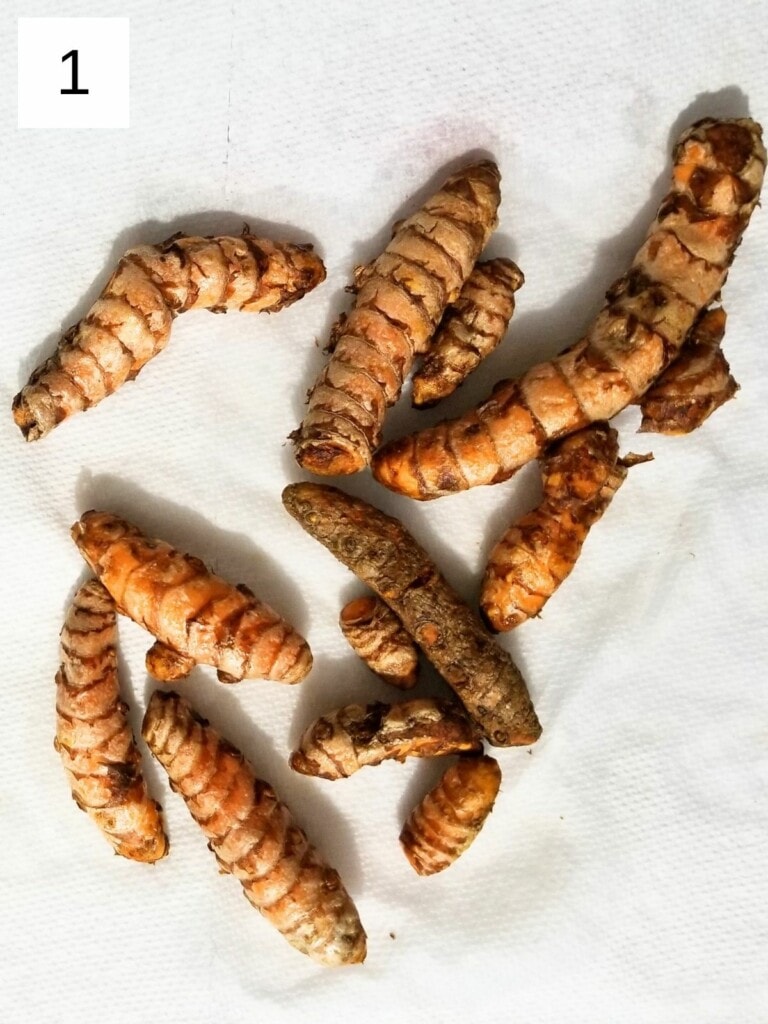

Step 2. Chop the roots into small pieces, and then add them to a very high-powered blender along with the coconut oil and sea salt. If needed, you can add the water while blending, but I highly recommend waiting since oil & water don't always mix well (especially in a cold house!).
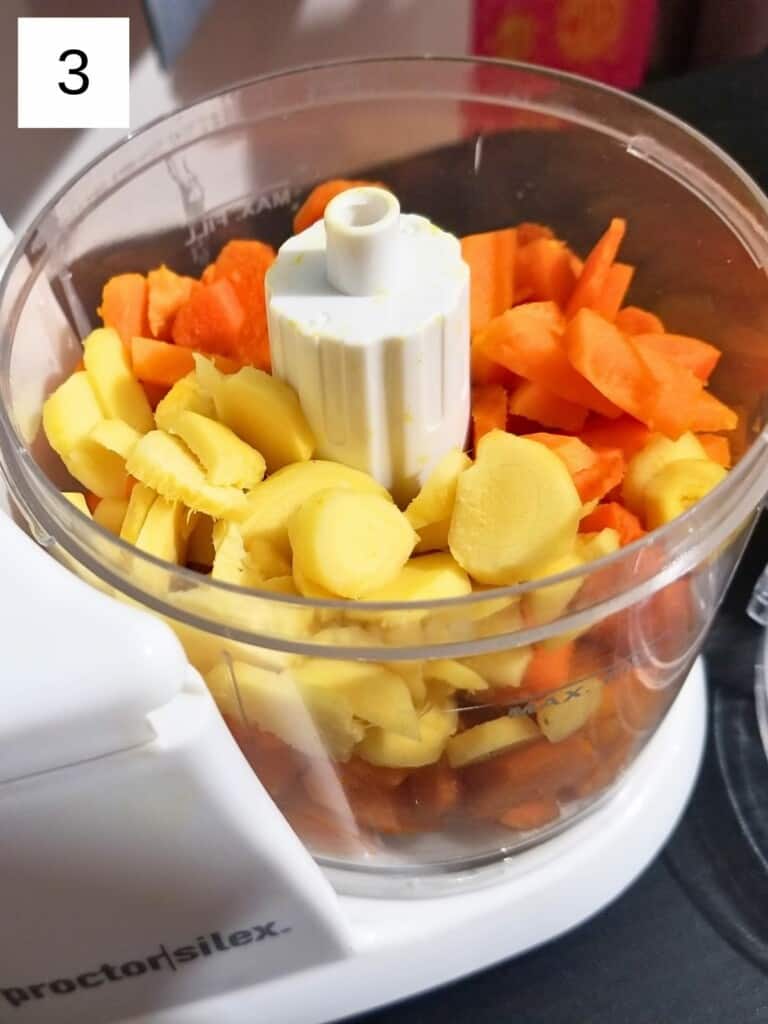
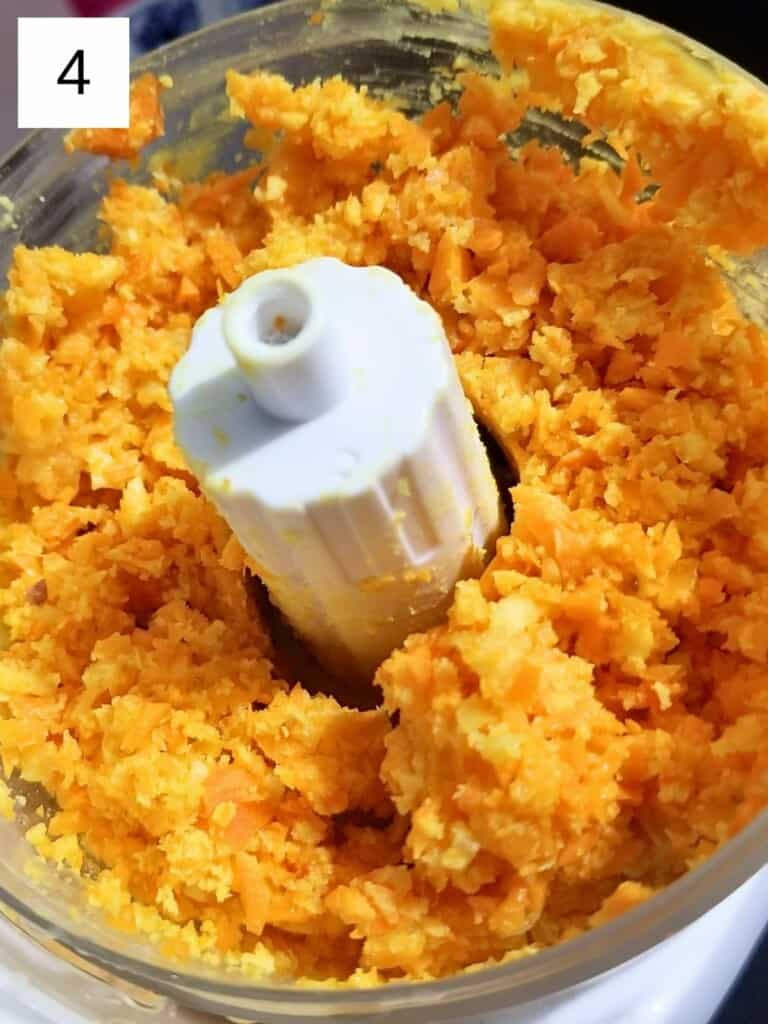

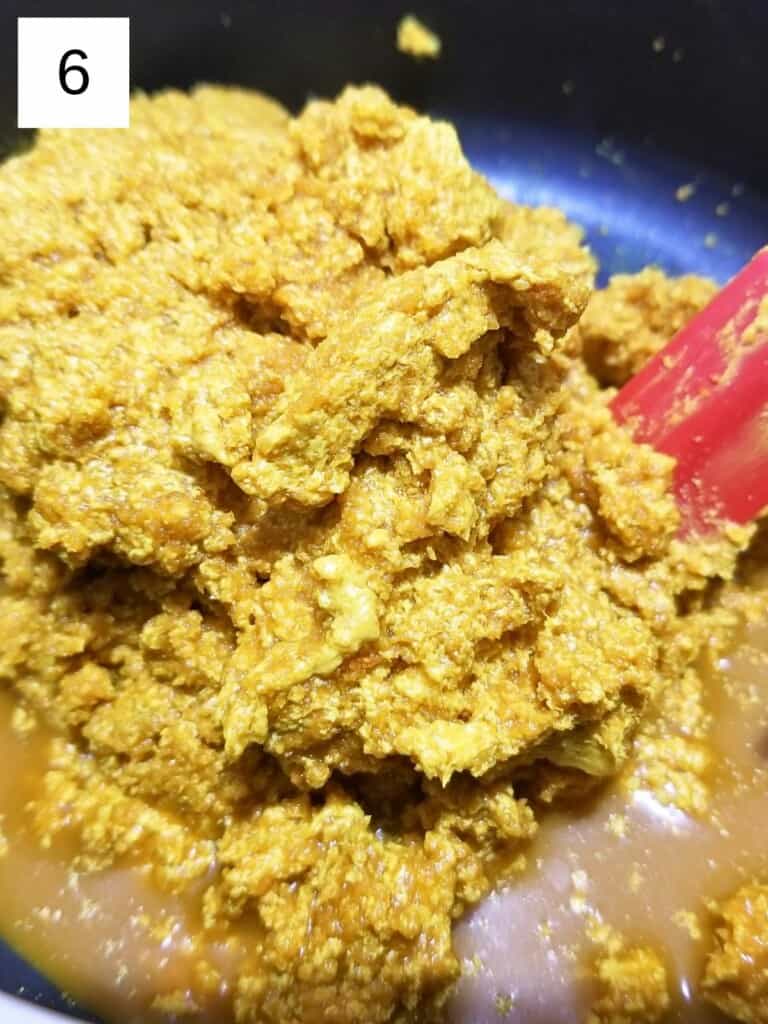
Step 3. Put your mix of turmeric, ginger, coconut oil, and salt into a small saucepan and add the water. Then heat everything on low for about 7-10 minutes. I recommend setting a timer, because although you need to heat the fresh turmeric a bit to make it more bioavailable, you don't want to overheat it.
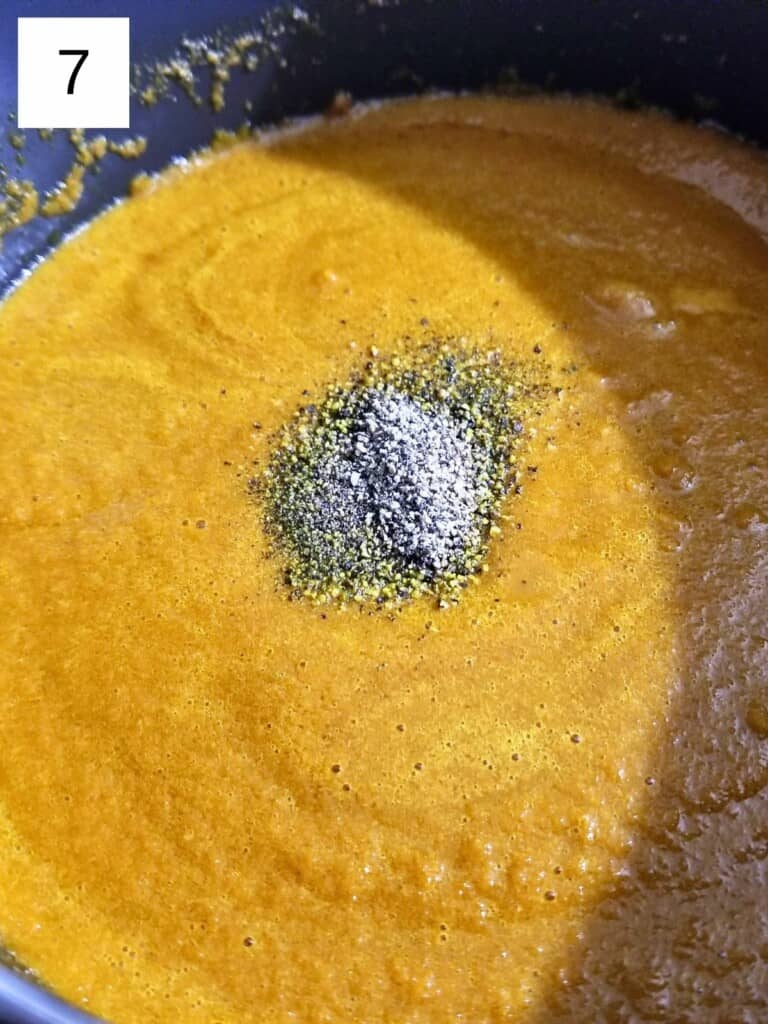
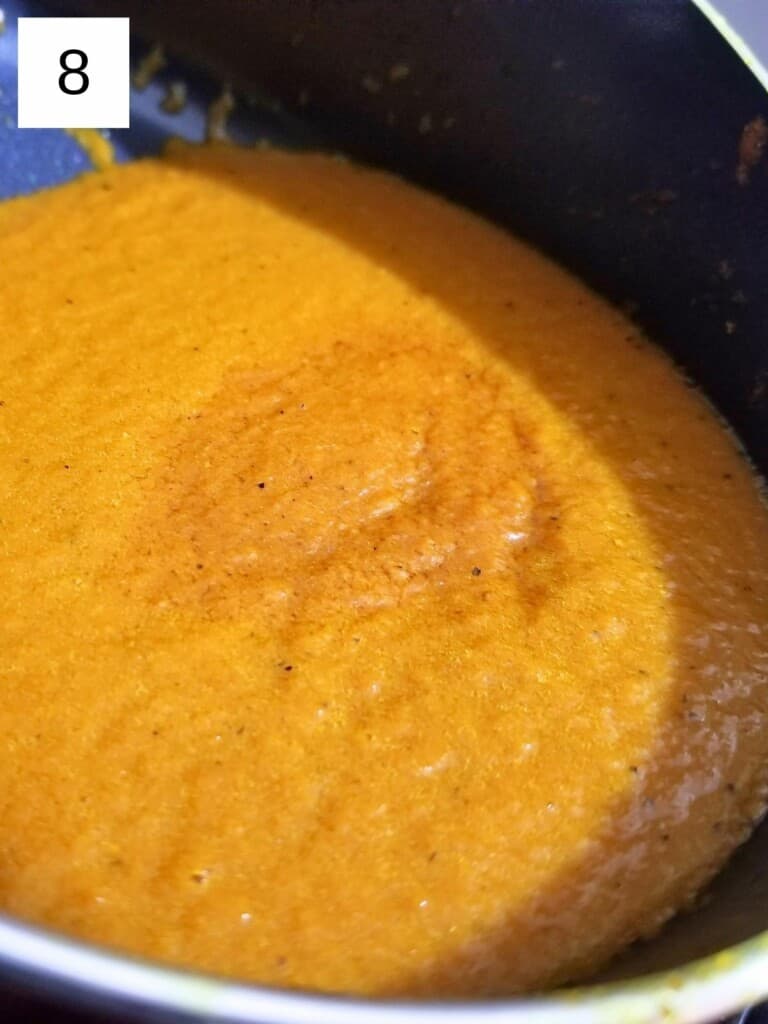
Step 4. Stir in the fresh-ground black pepper and simmer it all for one more minute, then let your golden paste cool before jarring it.
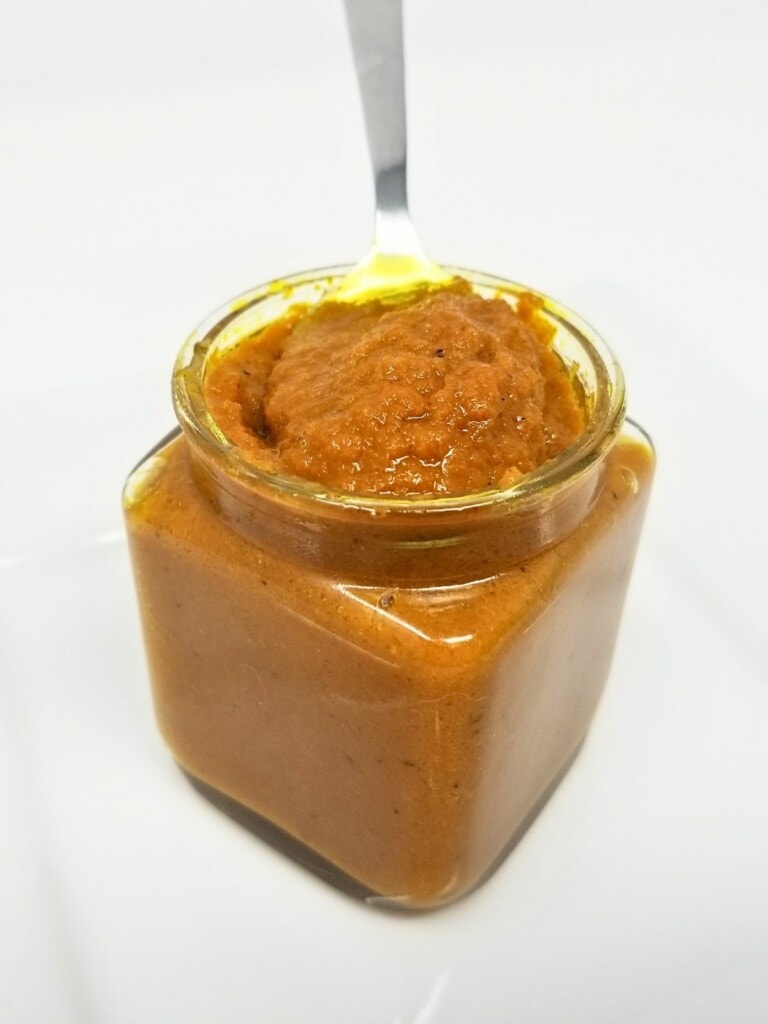
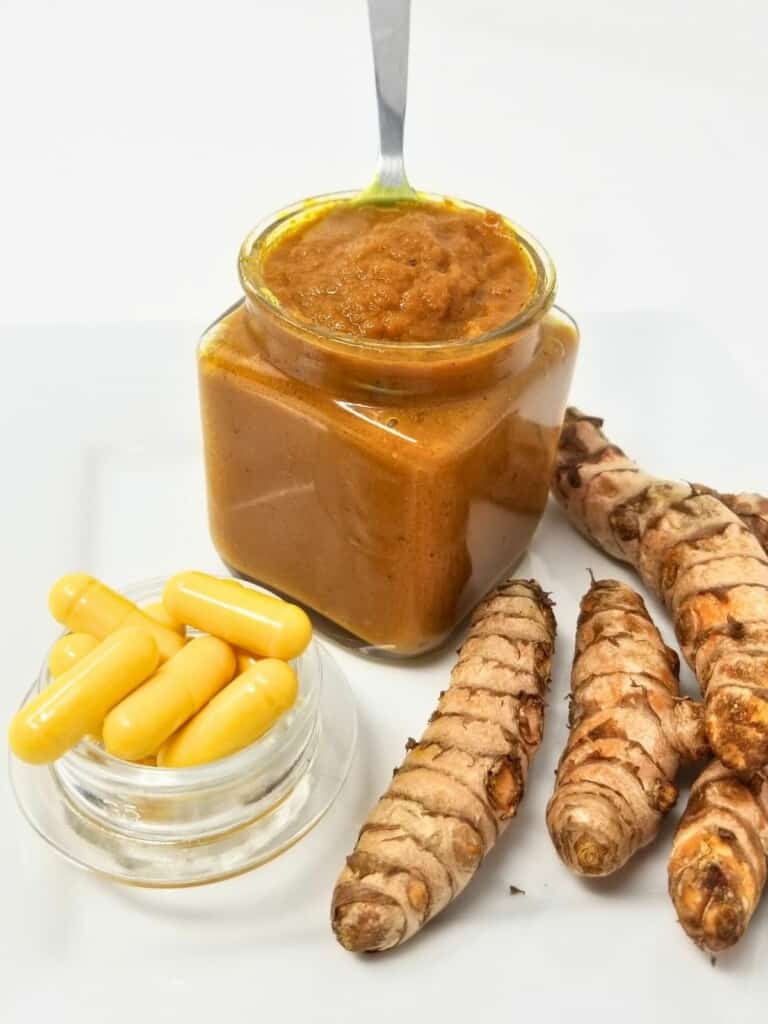
Recipe notes & tips
Turmeric Stains EVERYTHING!: Whether you're using fresh or dried turmeric, you'll find that its intense yellow color gets on everything and it stays there. The powder stains worse, but you'll be working with it for less time, so on average it will tend to stain less.
I use an old cutting board to prep my turmeric and a glass blender/juicer so I can get all the color out. Unless you use gloves, prepare to have yellow fingertips for about a week after making your own golden paste!
Making More Traditional Golden Paste: to make a more typical ayurveda golden paste, you would use ghee instead of coconut oil, and add about ½ teaspoon each of cinnamon & cardamom, and ¼ teaspoon ground nutmeg.
*Using Fresh Turmeric Root: this is definitely the more time-consuming and stain-inducing version of how to make turmeric paste. When I've made it with fresh turmeric, it's taken about 1.5 extra hours to wash, peel, and chop the fresh turmeric & ginger before making golden paste.
I've made both versions, and while I prefer the milder flavor of fresh turmeric, it's definitely something you should make in a big batch & freeze. Note that 6oz. of fresh turmeric will yield roughly 4.5-5oz. once peeled (fresh ginger has a similar yield).
What to do with turmeric paste
- make it into a turmeric latte
- stir some into curry
- add it to a dry rub for chicken
- mix it into your next batch of soup
- make ginger turmeric shots
- use it to add color to roasted root vegetables
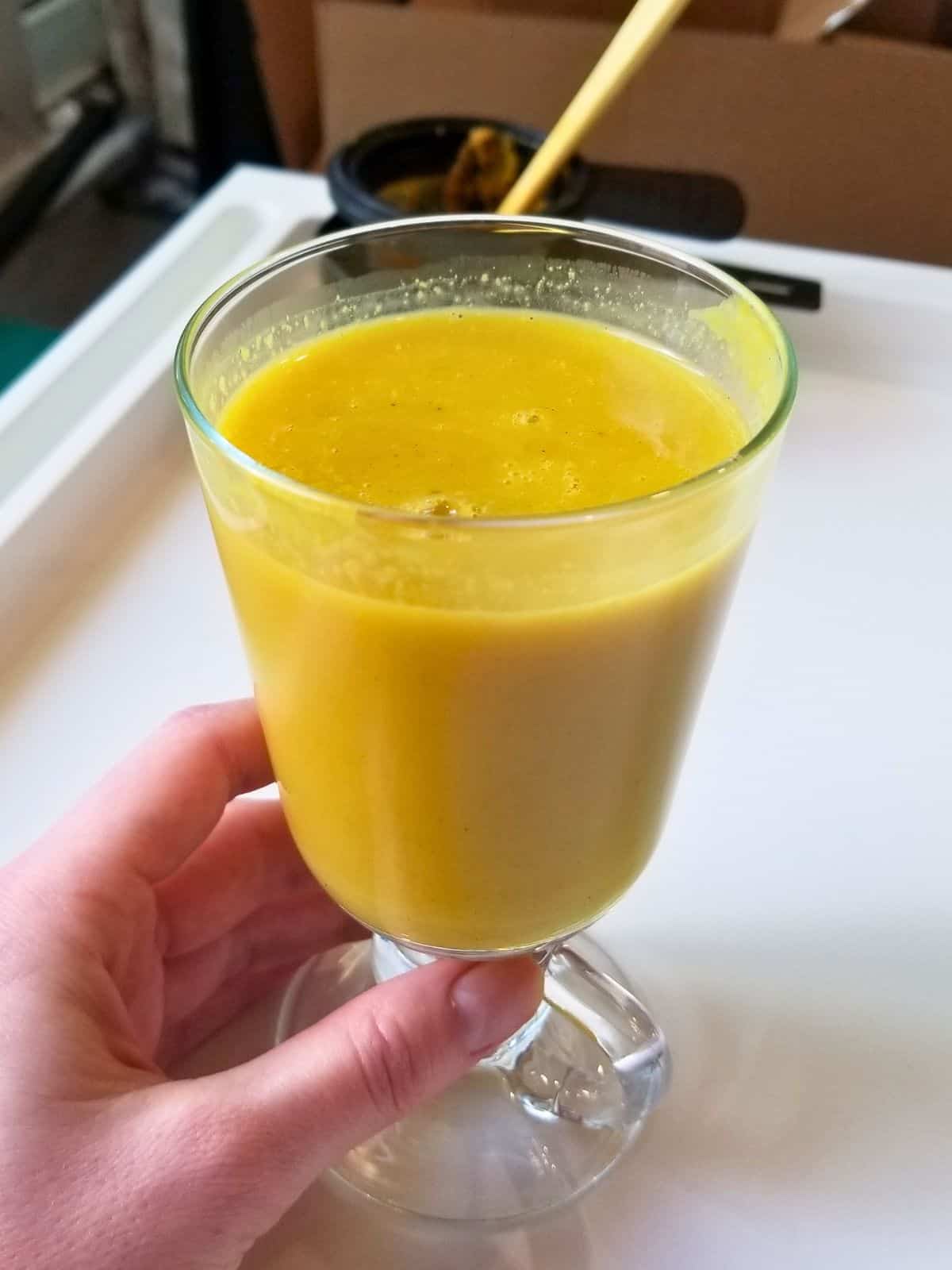
Turmeric Paste FAQ
Sort of. Turmeric paste is usually a more plain paste meant for either a cooking or cosmetic application, while golden paste is usually spiced with cinnamon, nutmeg, and cardamom (my version omits the warm spices). It's more popularly used for making ayurveda golden milk and turmeric lattes than standard cooking.
Turmeric paste has antioxidant, anti-inflammatory, and brightening properties. You can use turmeric paste on your skin, in your afternoon beverage, or to color a curry, along with dozens of other applications.
While there's no federally-recommended daily dose of turmeric, most people opt for about a teaspoon of turmeric paste per day.
Yes! Turmeric paste is believed to contribute to a glowing and less-reddened complexion thanks to its high levels of antioxidants and anti-inflammatory compounds.
Turmeric paste can last up to two weeks in the fridge if kept air-tight, but if you have too much turmeric paste to use in a few days, you can also freeze it in silicone ice cube trays (remember it may stain), or in patties between sheets of wax paper.
Golden Paste Recipe Card
As always, if you like the recipe, I really appreciate a 5-star review or a comment!
📖 Recipe
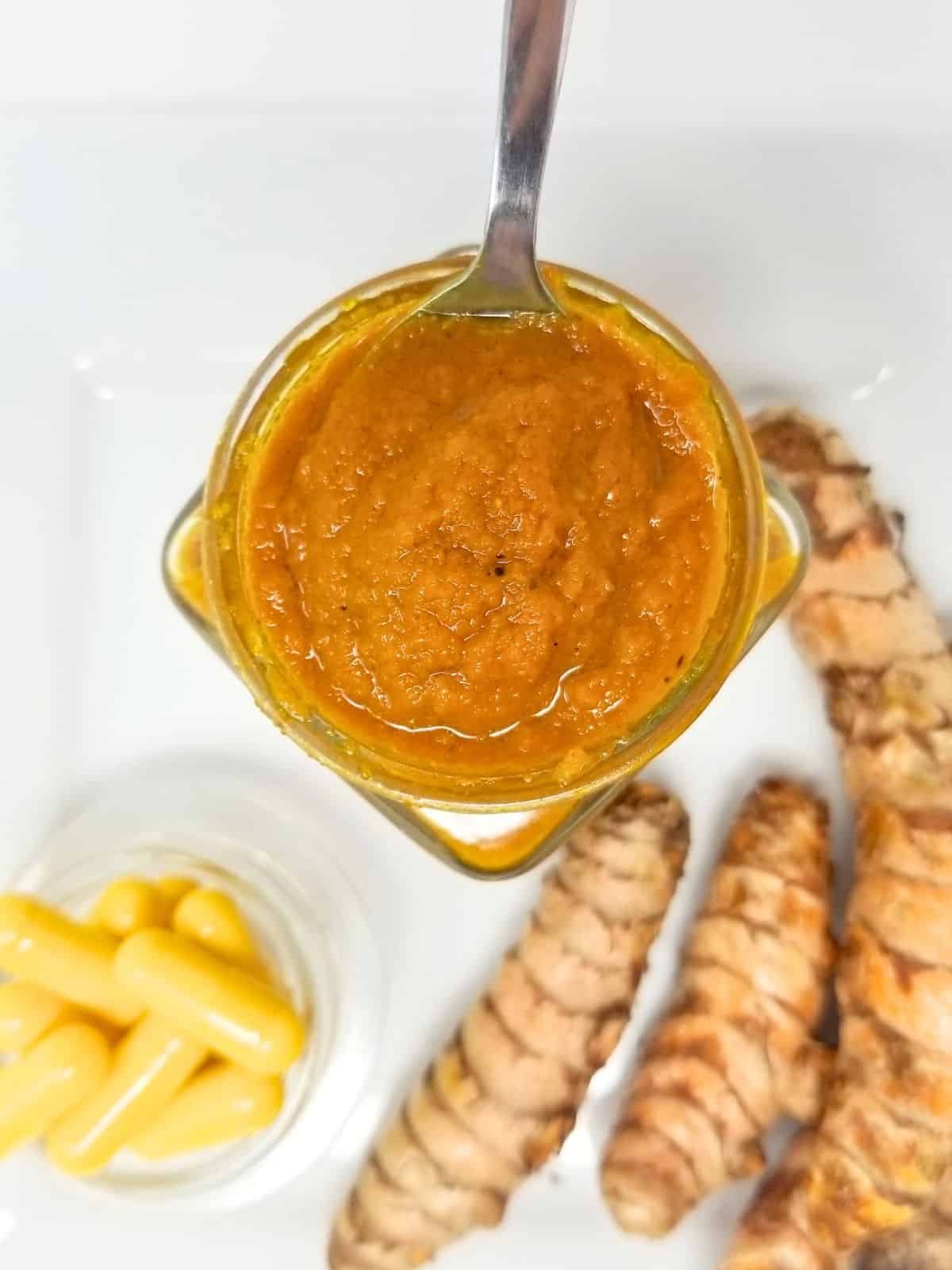
Golden Turmeric Paste (w/Fresh Root or Dried)
Ingredients
- ⅔ Cup water
- 6 oz. fresh turmeric root peeled & chopped* (or ⅓ cup turmeric powder + ¼ Cup water)
- 1 oz. fresh ginger root grated (or 2 teaspoons ground ginger)
- 4 Tablespoons melted coconut oil
- ½ teaspoon black pepper fresh ground
- ⅛ teaspoon sea salt
Instructions
- First, be aware that your hands and equipment will stain when making turmeric paste, so plan around that. If using turmeric powder, skip to step 3. If using the fresh roots, carefully wash and then dry all your pieces of turmeric and ginger, checking for mold, and then peel each piece with a spoon.
- Chop the roots into small pieces, and then add them to a very high-powered blender along with the coconut oil and sea salt. If needed, you can add the water while blending, but I highly recommend waiting since oil & water don't always mix well (especially in a cold house!).
- Put your turmeric, ginger, coconut oil, and salt mixture into a small saucepan and add the water. Then heat everything on low for about 7-10 minutes. I recommend setting a timer, because although you need to heat the fresh turmeric a bit to make it more bioavailable, you don't want to overheat it.
- Stir in the fresh-ground black pepper and simmer it all for one more minute, then let your golden paste cool before jarring it.

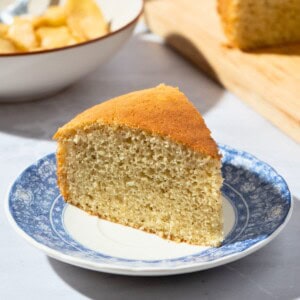











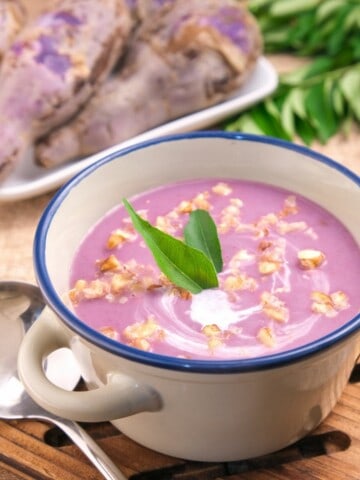
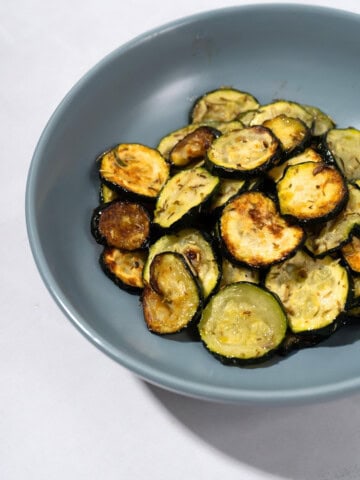
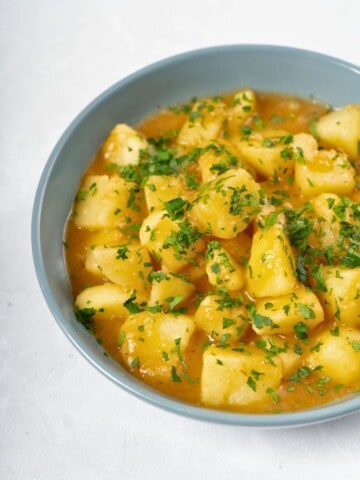

Christi Wilson says
Does the fresh tumeric paste keep a low histamine level when stored in the fridge?
Max says
It will for at least a couple days, but only as long as you don't open it and expose it to the air (& histamine-producing bacteria) further. The day after making my most recent batch, though, I froze mine in blocks of 2 Tablespoons using a silicone ice cube tray, and they've been defrosting beautifully!